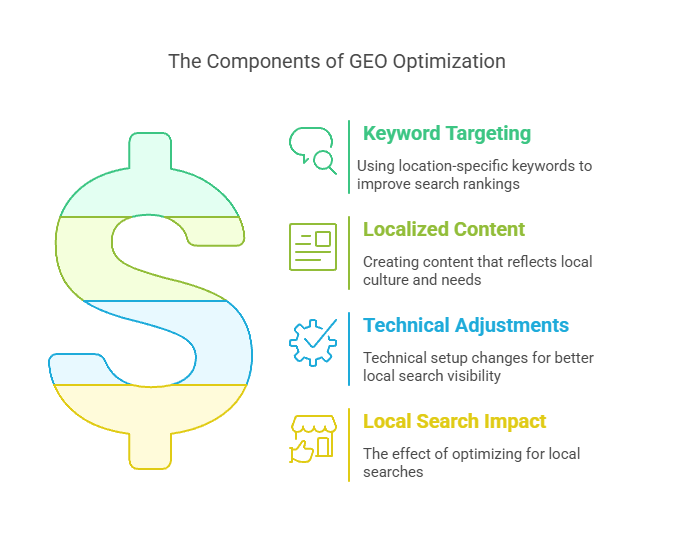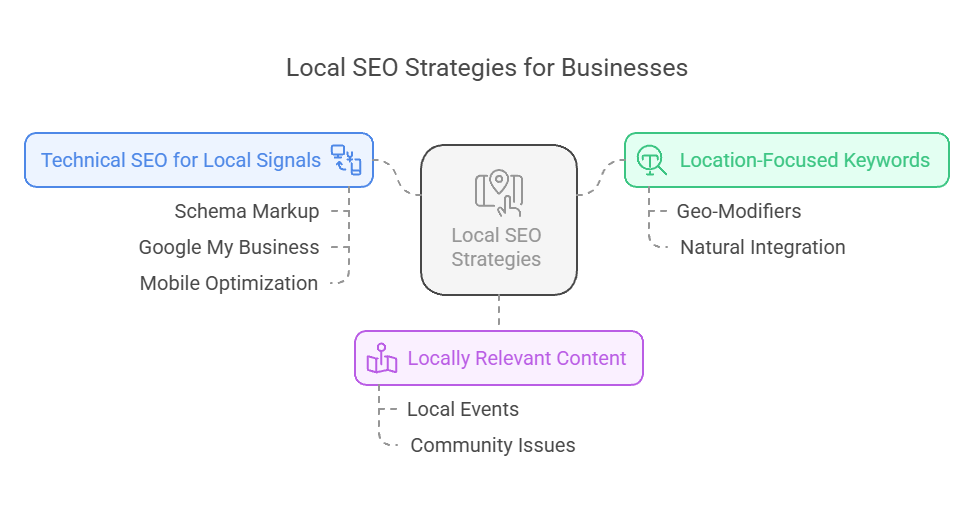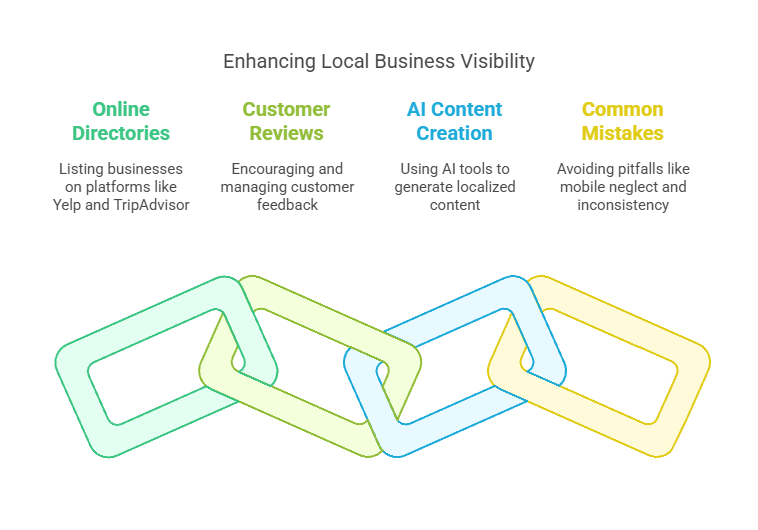If you’ve ever searched for “coffee shops near me” or “best plumbers in Austin,” you’ve interacted with GEO optimization—a strategy that tailors content to specific locations. GEO (Geographic Optimization) ensures your business appears in local searches, connects with nearby customers, and stands out in crowded markets. But how does it work, and why is it critical in 2024? This article breaks down GEO optimization, its impact on modern marketing, and actionable tips to leverage tools like WriterX for better local visibility.
Understanding GEO: More Than Just a Pin on a Map
GEO optimization involves tweaking your content and technical setup to rank higher in location-based searches. Think of it as SEO’s hyper-local cousin. For example, a bakery in Miami wants to appear when someone searches “birthday cakes Miami,” not just “birthday cakes.” This requires a mix of keyword targeting, localized content, and technical adjustments. Platforms like Google and Bing prioritize GEO signals—like city names or ZIP codes—to deliver relevant results. Ignoring these signals means missing out on nearby customers ready to buy.
Why GEO Matters (Especially for Small Businesses)
Over 46% of Google searches seek local information, and 88% of these searchers visit a store within a week. For small businesses, GEO levels the playing field against bigger brands. Take “Jen’s Yoga Studio” in Denver: by optimizing for “beginner yoga classes Denver,” she outranks national chains in local searches. However, GEO isn’t just about keywords. It’s about creating content that resonates with local culture, events, and needs. WriterX’s guide for small businesses shows how AI can craft location-specific blogs, social posts, and service pages efficiently.

How to Optimize GEO: 5 Strategies That Work
1. Target Location-Focused Keywords
Start with keywords that include cities, neighborhoods, or landmarks. Tools like WriterX’s SEO optimizer suggest geo-modifiers like “affordable,” “near [landmark],” or “open late.” For instance, “emergency plumber Houston” or “vegan bakery downtown Chicago” attract ready-to-act locals. Avoid stuffing keywords—Google penalizes unnatural phrasing. Instead, weave them naturally into headings, meta descriptions, and blog content.
2. Create Locally Relevant Content
Write about local events, news, or community issues. A realtor in Nashville could blog about “Nashville’s Top Family-Friendly Neighborhoods in 2024” or “How the New Stadium Impacts Home Prices.” Use AI tools like WriterX to generate ideas, then add personal touches. For example, share a story about helping a client find a home near a popular school district. This mix of data and humanity builds trust with local readers.
3. Optimize Technical SEO for Local Signals
Technical tweaks make your site GEO-friendly. Add schema markup to highlight your address, phone number, and business hours. Ensure your Google My Business profile is updated and consistent with your website. WriterX’s WordPress content strategy guide explains how plugins automate schema markup and local SEO checks. Also, optimize mobile loading speeds—55% of local searches happen on phones.

4. Leverage Online Directories and Reviews
List your business on platforms like Yelp, TripAdvisor, and industry-specific directories. Encourage satisfied customers to leave reviews mentioning your location (“Best dental clinic in Phoenix!”). Respond to reviews promptly—Google values engagement. Tools like WriterX can auto-publish positive reviews to your site, boosting credibility.
5. Use AI to Scale Localized Content
Creating unique content for multiple locations is time-consuming. AI tools like WriterX generate drafts for different cities or regions in minutes. A roofing company with branches in Dallas and Austin could use AI to write “Storm Damage Repair in Dallas” and “Austin Roofing Laws You Should Know,” then add local team photos and testimonials. WriterX’s bulk content tools streamline this process without sounding robotic.

Common GEO Mistakes to Avoid
Even well-intentioned efforts can backfire. Here’s what to watch for:
- Ignoring Mobile Users: 78% of local mobile searches lead to purchases. Ensure your site is mobile-friendly.
- Inconsistent Listings: Your address or phone number must match across all platforms.
- Generic Content: “Best Restaurants in Florida” is too broad—target cities or neighborhoods instead.
How WriterX Simplifies GEO Optimization
WriterX isn’t just an AI writer—it’s a GEO ally. The platform’s SEO features auto-suggest local keywords, while its WordPress plugin ensures technical SEO compliance. For multi-location businesses, bulk content tools maintain consistency without manual grunt work. Plus, the Quick Start Guide helps beginners launch GEO campaigns in hours, not weeks.
GEO optimization bridges the gap between your business and local customers. By blending targeted keywords, community-focused content, and smart tools like WriterX, you can dominate local searches without drowning in busywork. Ready to get started? Explore WriterX’s GEO features or connect with their team via the contact page for personalized tips. Remember: in local SEO, the closer you are to your audience, the farther you’ll go.

